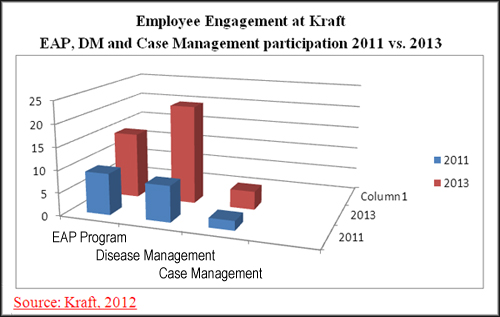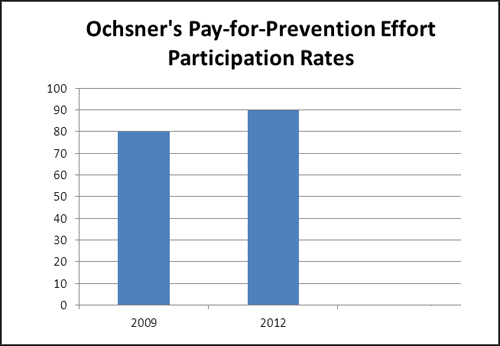By Brian Schilling
An enormous amount of ink and energy have been devoted to private health exchanges, leading some to believe they will become the next big thing in health care as large employers flock to them in droves. Champions of private exchange aren’t hard to find—at least two large employers have already dumped their traditional plans and pushed employees into private exchanges. But will anyone else follow suit?
Robert Galvin, M.D., who led GE’s global health benefits office for 15 years and now helps dozens of companies manage their health care benefits as the CEO of Equity Healthcare, says: not right away.
Will Other Employers Follow Darden Restaurants and Sears into Private Exchanges?
Speculation about the market potential of private exchanges moved into high gear in late 2012, when Darden Restaurants and Sears both said that they would drop coverage as soon as they reasonably could and direct employees to shop for coverage through their own private health exchanges. Both firms have since moved forward with those pledges. At first glance, the benefits of a private exchange for providing employee coverage seem compelling—expanded choices for employees, a minimum of administrative hassle, and dramatically simplified budgeting, at least in the short term.
Nevertheless, Galvin doesn’t see Sears and Darden as early movers in a more general shift. “They’re both low-wage employers with lots of part-time employees and fairly high turnover,” he said. “They’re essentially large versions of the small employers that exchanges were designed for, so it’s not that surprising that they’re interested. They’re not good bellwethers for the rest of the market.”
Are Private Exchanges the New 401k?
Aon Consulting, Mercer, Buck Consulting, Accenture and other consulting firms are all marketing private exchanges. While most of these exchanges only have enrollment numbers in the thousands—rather than millions—they’re being promoted aggressively.
Private exchanges would be like their public counterparts, organizing and repackaging information from participating health plans to make it easy for employees to compare and buy coverage online. During open enrollment, employees—not their employers—would take the reins, making all their own coverage decisions autonomously. Employers would still presumably foot much of the bill, albeit on a defined basis, meaning that each employee would receive only a set amount per month to be used on the health care plan of their choice. If employees choose a particularly generous plan—that is, one that costs more than the set amount—they’ll make up the difference themselves.
Some observers expect this will pave the way for a dramatic shift in the benefits world, similar to the 1980s when defined retirement benefits (i.e., pensions) gave way almost completely over a 20-year period to defined contribution plans (i.e., 401k plans).
Galvin remains unconvinced, although that makes him somewhat of an outlier among his peers.
“There are only a few of us out there who are saying that exchanges just aren’t going to live up to expectations,” said Galvin. “But I have real trouble seeing the benefit.”
Galvin is in a position to know. He speaks to top executives at two or three firms every month about whether they should be looking at private exchanges. Only infrequently does he find one that remains interested after he goes through the math in detail. As part of these discussions, Galvin is always careful to make the point that in his opinion the upshot of the exchange ‘exit strategy’ is that employers retain responsibility for paying for health care, but lose the leverage to influence the type and value of health care their workers buy.
“Once salaries are increased to make the exchanges affordable, once the loss of the health care tax break is factored in, once the benefits of self‐insurance are appropriately weighed, the savings disappear in almost every case,” says Galvin. In addition, Galvin notes that there is no reason to believe that a defined contribution will inflate any less slowly than a defined benefit. “Expecting competition between insurance carriers to lower costs when the core drivers of costs are providers doesn’t pass the common-sense test,” he says.
But apart from financial considerations, says Galvin, employers have two other good reasons to stay in the benefits game: morale and worker retention. “The labor market is still quite competitive, recession or not,” says Galvin. “No one is going to want to be first—or second or third—to say to their employees, ‘You’re on your own with respect to health benefits.’ The only large firms that are going down this path are the ones that don’t need to attract and retain highly trained employees and the ones that haven’t sharpened their pencils yet.”
Retirees, Part-Time Workers, and COBRA
To the extent that exchanges—either public or private—make inroads into the employer community, it may be through the back door, as a low-hassle way to handle the needs of retirees, part-time workers, and former employees on COBRA. For all three groups, employers’ concerns about recruitment, retention, and morale may be reduced or eliminated and employee expectations may be substantially different as well.
According to a 2012 National Business Group on Health survey of large employers, 53 percent of firms are looking into public or private exchanges as a possible exit strategy for providing health benefits for retirees. Likewise, 41 percent of firms are investigating whether exchanges might handle benefits for former employees on COBRA and 33 percent are considering moving part-time workers to some sort of exchange.
“I do expect to see some movement here,” said Galvin, referring to the possibility that large firms will embrace the exchanges when it comes to providing benefits for these three groups. “There’s a much more natural fit between the exchanges and retirees, part-time workers, and those on COBRA.”
The Long View
When asked about the longer-term future of employer-sponsored benefits, Galvin suggests that a number of current trends related to engaging consumers and revamping delivery systems will continue. With respect to consumer engagement, that means more use of incentives tied to health outcomes, a continued shift to high-deductible health plans, and greater price transparency. On the delivery system side, he says, we’ll see more medical homes, accountable care organizations and, perhaps most important, real payment reform.
What we won’t see, he says, is an exit from employer funding of health benefits.
"One way or another, employers are going to stay in the game either directly funding benefits by buying them, or by paying some sort of fine or tax,” says Galvin. The smart money is on the status quo. “Even employers that don’t want to be in the business of providing benefits realize that it’s important. It’s the monkey on your back that you need to attend to, or it will muck up whatever else it is that you’re trying to do.”










